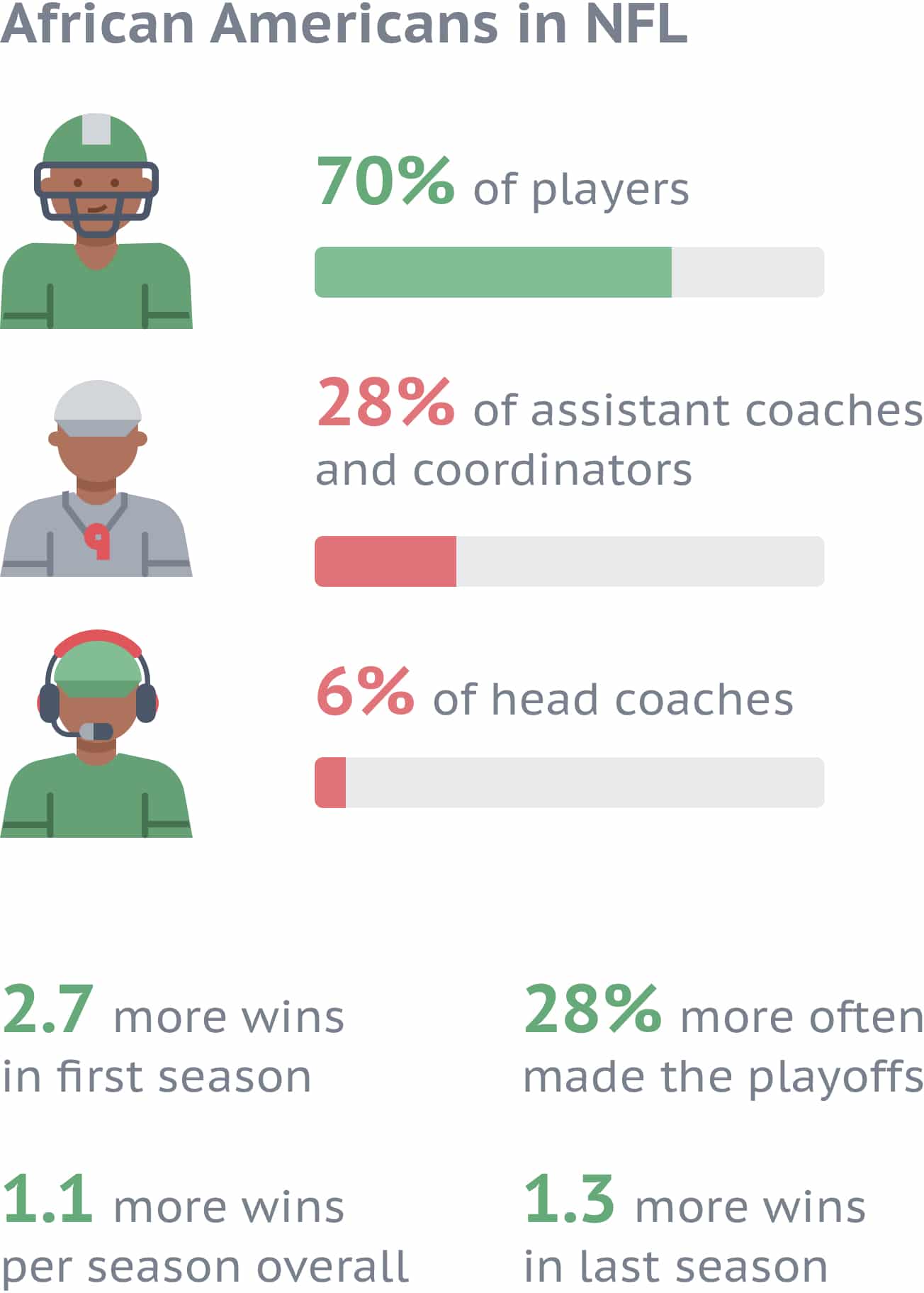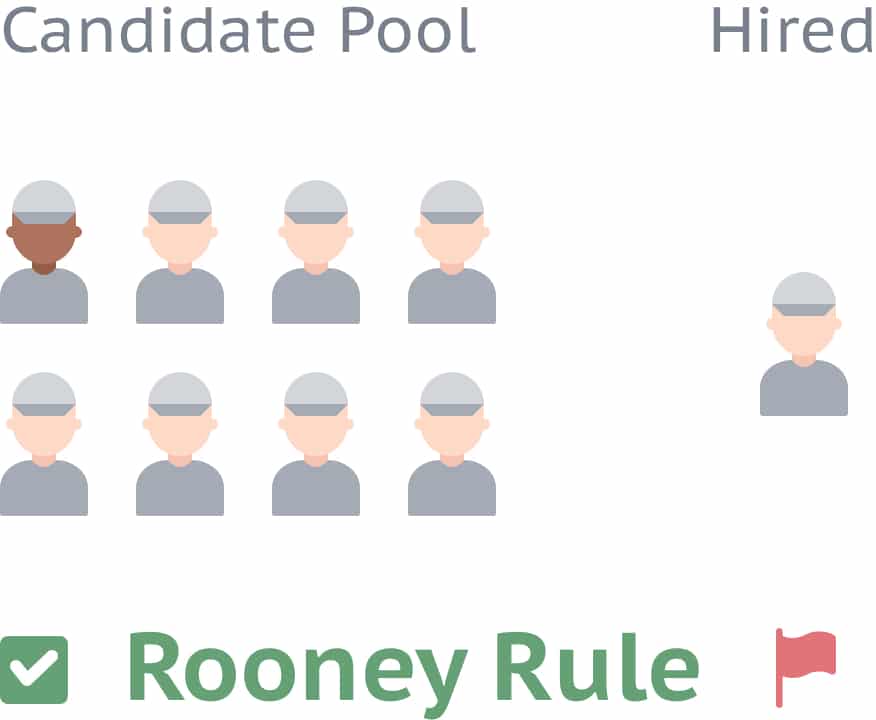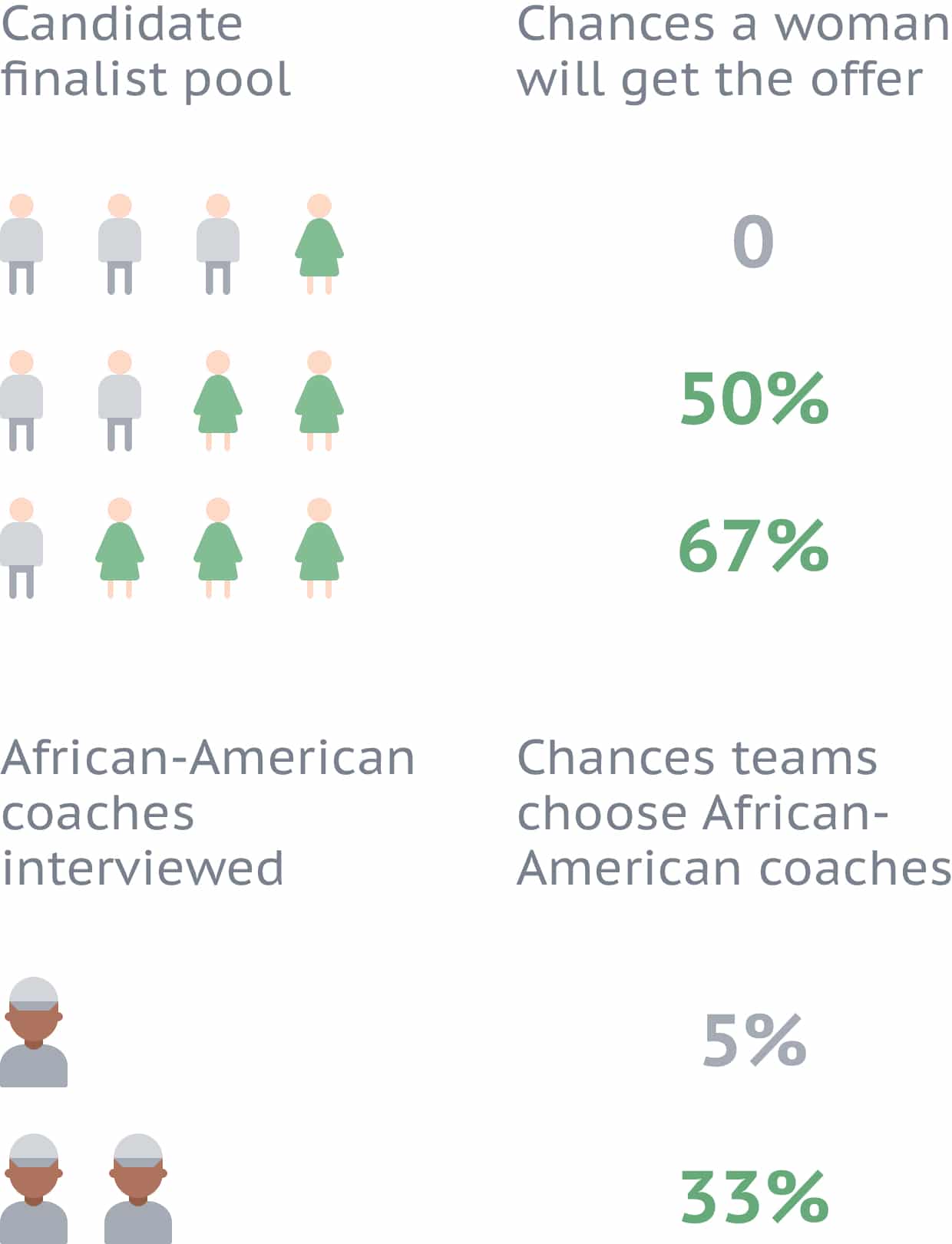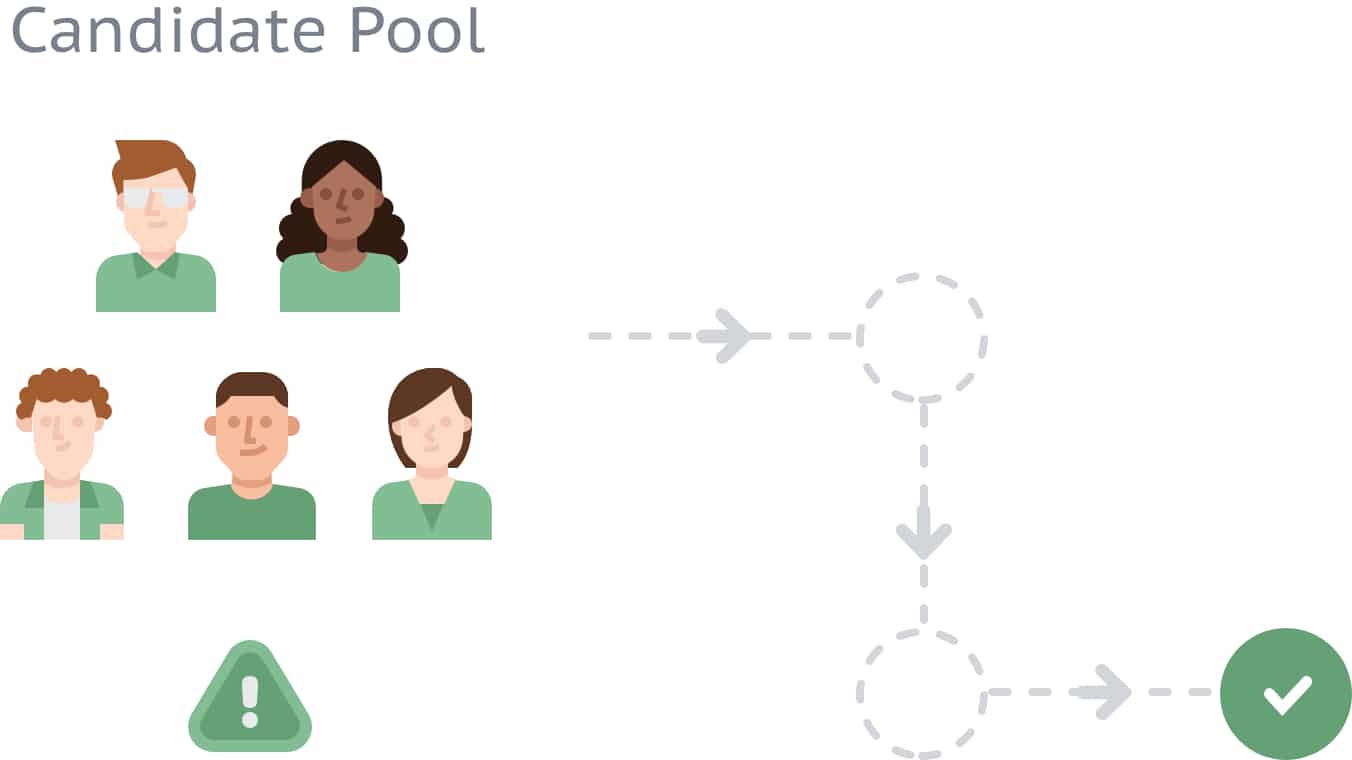The Rooney Rule, as you probably know, is a well-meant attempt to help with diversity, equity, and inclusion that comes to us from the National Football League (NFL). It hasn’t necessarily worked, but the rule has raised awareness about the problem and continues to evolve for the better.
The Rooney Rule is now a part of diversity and inclusion efforts for many recruiters. Without discounting the benefits it can bring, we’d like to offer two things to keep in mind if you’re considering it.
One, the rule overlooks the fact that a single underrepresented minority candidate isn’t enough. Two, it attempts to manufacture diversity rather than getting there organically.
Superior performance, inferior opportunities
In 2002, civil rights attorneys Johnnie Cochran and Cyrus Mehri released an influential study titled Black Coaches in the National Football League: Superior Performance, Inferior Opportunities. The study revealed that ethnic-minority coaches weren’t getting a fair shot at head-coaching positions.

The numbers:
At the time of the study, 70% of the players in the NFL were African-American. Yet only 28% of assistant coaches and coordinators were African-American. And only 6% of head coaches were African-American.
Meanwhile, African-American coaches performed better than their Caucasian counterparts. They averaged 2.7 more wins in their first seasons and averaged 1.1 more wins per season overall. They also made the playoffs 28% more often. In their last season before getting fired, African-American coaches typically won 1.3 more games than their Caucasian counterparts who got fired.
Enter the Rooney Rule
To address the disparity, the NFL implemented the Rooney Rule in 2003. Dan Rooney was the owner of the Pittsburgh Steelers and member of the Pro Football Hall of Fame. He was also a former chairman of the NFL’s diversity committee.
The Rooney Rule requires teams to interview at least one ethnic-minority candidate when hiring a new head coach. It also (now) requires teams to interview minorities for general manager positions as well as women for some front-office positions. It continues to evolve.
The Rooney Rule is well-intentioned, but it’s incomplete. Only one team (the Detroit Lions) has ever received a fine for violating the rule. Questions linger about its fairness in real-world application.

A few years back, for example, the Philadelphia Eagles hired a Caucasian coach after interviewing several Caucasian candidates and a single African-American one. The single African American was an assistant coach who had never been a coordinator. Considering that head coaches need experience as coordinators, some believe the Eagles held the interview just to check the Rooney Rule box.
Bottom line: The number of African-American head coaches peaked in 2011 at eight, accounting for 25% of the league’s 32 head coaches. But in 2020, there may be just two African-American head coaches in the NFL.
Red Flag 1: A single minority candidate isn’t enough
One thing the Rooney Rule doesn’t address is the limited impact that a single diverse candidate has on the hiring process. And by limited, we’re talking almost zero.
If a single minority or female candidate is one of four finalists, they should theoretically have a one-in-four chance of getting an offer. Statistically, however, it doesn’t work that way because of human nature. In the human mind, a single minority candidate becomes an outlier. And they have next to no chance of getting an offer.
“Why does being the only woman in a pool of finalists matter? For one thing, it highlights how different she is from the norm,” reports the Harvard Business Review. “And deviating from the norm can be risky for decision-makers, as people tend to ostracize people who are different from the group.”

According to Harvard Business Review research, there’s statistically zero chance a woman will get the offer when the finalist pool is three men and one woman. However (and it’s a big however), the chance goes up to 50% when there are two women and 67% when there are three.
Those statistics hold true for the NFL and ethnic-minority coaches, it turns out. The Harvard Business Review also analyzed interview processes for head-coach hirings in the NFL from 2013 to 2017. They found that teams chose African-American coaches 5% of the time when they interviewed one African-American candidate only. Meanwhile, teams chose African-American coaches 33% of the time when they interviewed at least two.
Red Flag 2: The Rooney Rule tinkers with candidate pools
While the Rooney Rule isn’t the same as racial quotas, it does require you to tinker with your candidate pools. And that’s not something you need to do if you’ve got a large enough candidate pool.
Racial quotas essentially reserve a certain number of positions for specific underrepresented groups. While also well-intentioned, they favor one group over another. And they’ve been deemed to violate Title VII of the Civil Rights Act.
The Rooney Rule, by comparison, seeks to level the playing field for all groups. Detractors of the rule, as well as racial quotas, question whether you’re sacrificing quality to ‘manufacture’ diverse candidate pools. Supporters and detractors alike struggle with asking hiring teams to purposefully source minority candidates.
Our own research has found that large numbers of applicants will naturally yield more diversity in your candidate pool. Basically, more candidates from underrepresented groups at the top of the funnel net more qualified candidates from underrepresented groups at the bottom.

In addition to the Rooney Rule, your hiring team could improve the inclusiveness of your job descriptions. Also, you could wait until you have a large candidate pool before starting any interview process. By focusing on the top of the funnel, you may avoid having to create ‘fixes’ at the bottom.
What’s better than the Rooney Rule?
While the Rooney Rule hasn’t eliminated racial inequality among head coaches in the NFL, it has highlighted it. It also continues to evolve, so there’s still hope that it can make good on its intentions. And using the rule can help create more diversity at your company, if you’re using it correctly (here are some Rooney Rule tips). And as long as you keep these two red flags in mind.
The fact is a single minority candidate isn’t enough, and attempts to manufacture diversity are inherently problematic. Of course, that doesn’t mean you should avoid trying to bolster your diversity and inclusion efforts. Quite the opposite: if you’re considering diversity hacks like the Rooney Rule, you probably need to more intentionally bake fairness and inclusivity into every step of your hiring process.
A fair, inclusive hiring process is efficient, effective, and a powerful driver of an organically diverse workforce that impacts your business’s bottom line. Hiring equity should be your North Star – and it’s possible to achieve, no matter how limited your resources or how quickly the sociopolitical landscape is changing. We’ve packed all our best tips into The Talent Acquisition Mega Guide to Equitable Hiring in 2024. Download it now to learn how you can systematically build a better hiring process that delivers for your company and your candidates.
